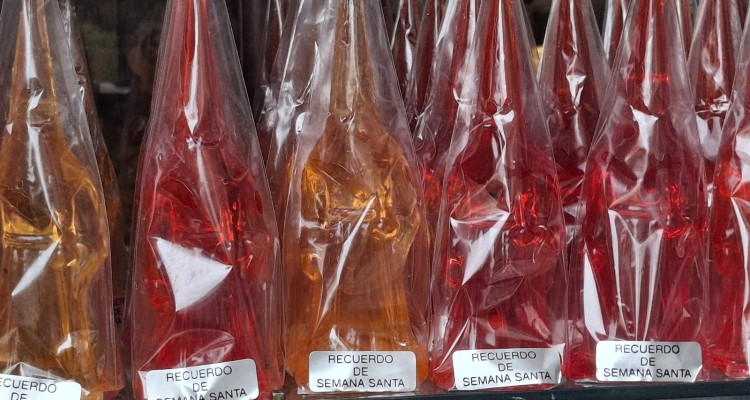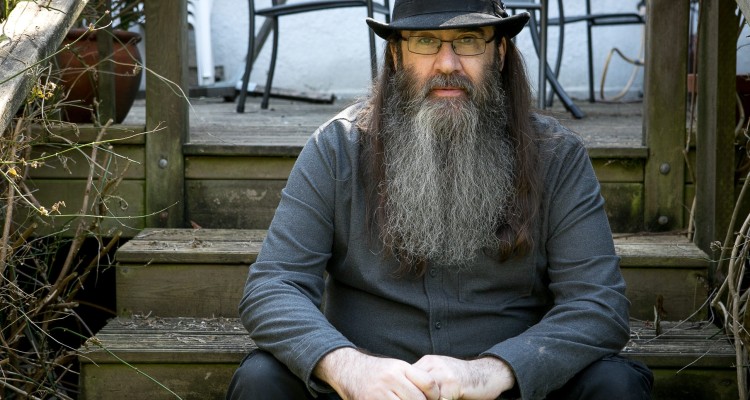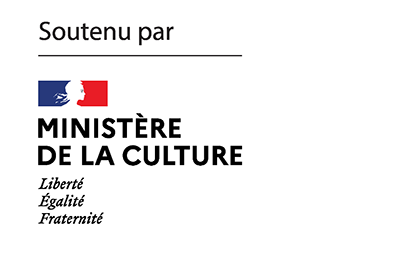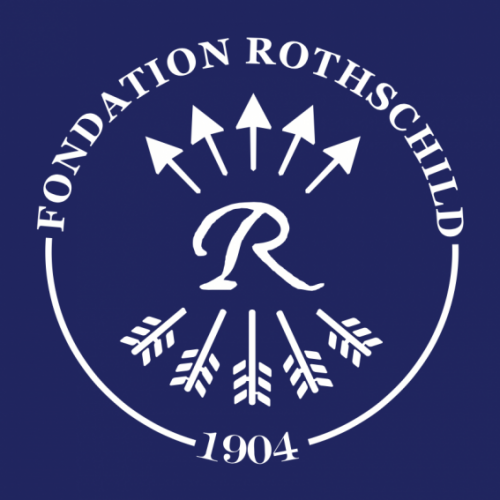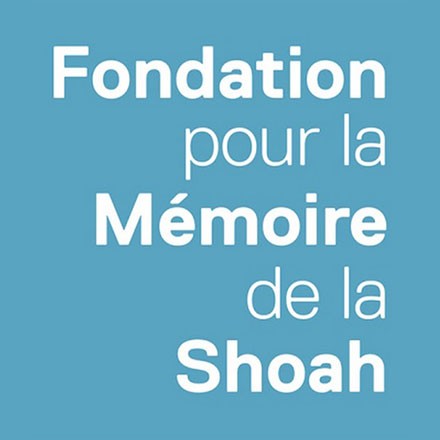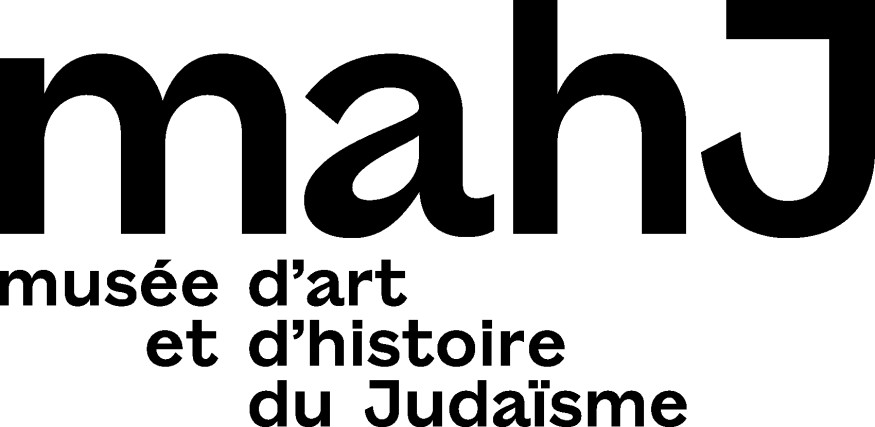World famous since its adaptation by Walt Disney, Bambi, A life in the woods, was first a children’s story imagined, a century ago, by the Viennese Jewish writer of Hungarian origin, Felix Salten. A writer who was also a convinced Zionist and a militant anti-assimilationist. Starting from the author’s biography, Mitchell Abidor offers us another reading of Bambi as a metaphor for the life of the Jews in Eastern Europe, torn between the mass murders of the pogroms and the suicide of assimilation; far from a children’s tale.
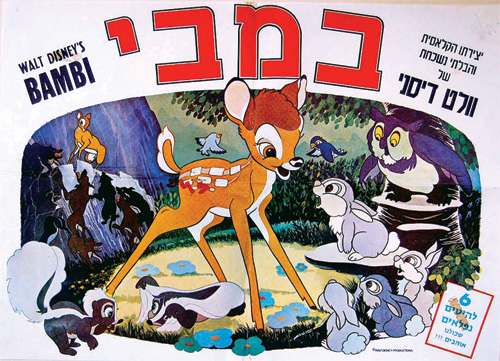
What if the rodent Jews of Art Spiegelman’s classic Maus[1], tracked down and murdered by feline Nazis, had a cervine parent? For it is not just possible, but likely that one of the most popular characters of children’s literature, Bambi, was a Jew.
When I refer to Bambi, it is to the Bambi of Felix Saltern’s novel, which like James Joyce’s Ulysses and T.S. Eliot’s The Waste Land, was published exactly a century ago this year. The far better-known Disney Bambi is not our focus here; instead, it is the book and its author, both products of a specific time and milieu – early twentieth century Central Europe – and bearing significant marks of them, despite its pastoral setting. The notion that Bambi is a Jew, or more accurately, symbolic of the Jewish condition, might seem to be an intellectual game. But the ways in which the novel, now available in a brilliant new translation by Damion Searles published by NYRBClassics, expresses the worldview of its author, a committed Zionist, make it not only a plausible, but a necessary reading.
Felix Salten was born Siegmund Salzmann in Pest in 1869 to a merchant father who was himself the son of a rabbi. The family left Hungary for Vienna when Salten was little more than an infant, and Salten would later insist “I am not a Hungarian,” identifying himself as Viennese.
Salten was part of the extraordinary crop of Jewish intellectuals in Vienna, and was a close friend of the great Arthur Schnitzler. Salten was a polymath, a critic, playwright, and feuilletoniste of great note. Along with Bambi and other children’s books, Salten is also thought to be the author of am anonymously published pornographic novel Josephine Mutzenbacher. As Paul Reitter points out in his excellent afterword to the new edition of Bambi, no notes or drafts exist in Salten’s papers for the pornographic tale, so attribution can only be speculative, but internal evidence makes the attribution safe (the book was included in a 2021 exhibition on Salten in Vienna).
Most importantly for our purposes, Salten was a deeply committed Zionist, an admirer and collaborator of Theodor Herzl. Salter wrote for Zionist periodicals, most importantly Herzl’s own Die Welt, and was a frequent speaker at Zionist gatherings in German-speaking Europe and he would later visit Palestine. His opposition to Jewish conversion and assimilationism was made especially clear in a talk he gave in January 1909 in Prague, where he shared the stage with Martin Buber (Franz Kafka attend a Prague talk of Salten’s in 1914). His talk was titled “The Lapse of Jewishness,” and in it he called on his listeners not to convert in order to obtain rights already theirs thanks to Jewish emancipation. Though not an advocate of Max Nordau’s “muscular Judaism,”[2] he told his audience that they should eschew deference in the face of Gentile arrogance. As the scholar Jay Geller describes Salten’s message in that talk, “they should recognize and draw upon the religious and moral force of their tradition, a tradition that is an integral part of Western culture, in order to shape that culture now and in the future.”
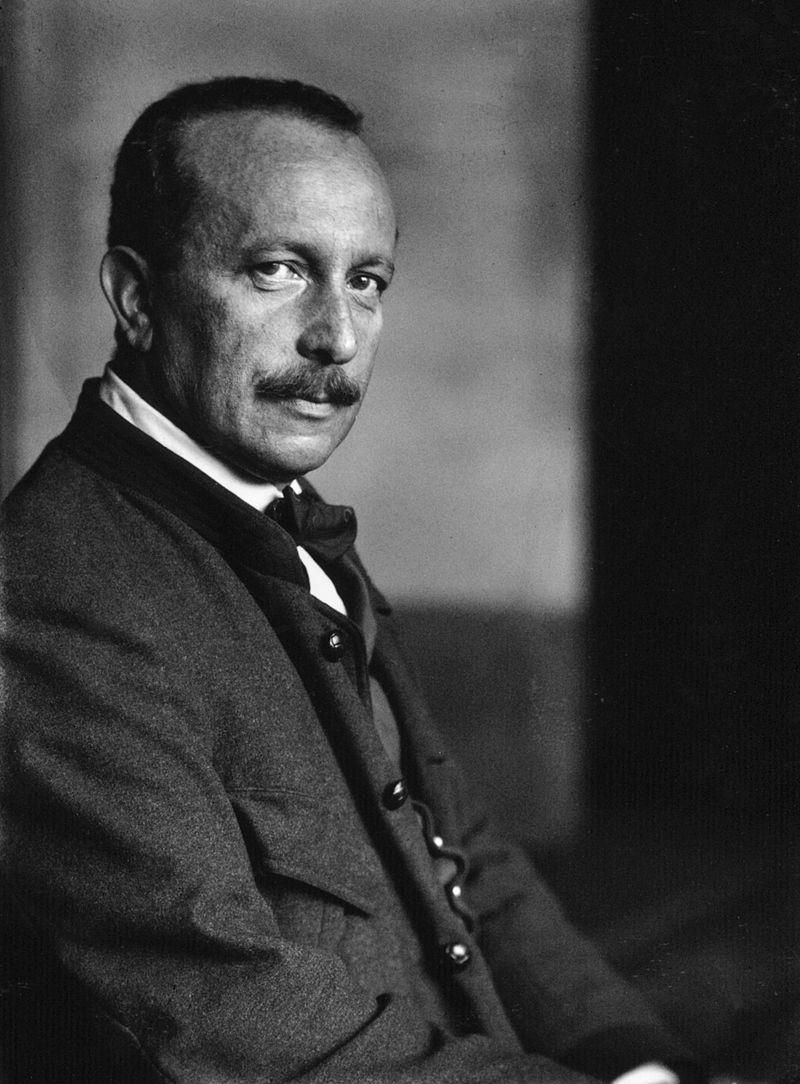
And so, though Salten was seemingly thoroughly assimilated into Viennese cultural life, we find Zionist anti-assimilationism and suspicion of non-Jews throughout Bambi. As Iris Bruce wrote in her seminal 2003 essay, “Schnitzler’s and Salten’s Responses to Cultural Zionism”: “With Bambi Salten lent a new voice to Zionist literature by engaging in the creation of [the] new genre of Zionist children’s literature.”
Choosing the biography of a deer as a basis for laying out the Jewish condition is not an odd choice. From birth a newborn deer faces countless threats from birth, living in an environment full of potential enemies, where it is required to learn precisely who threatens what harm, chimes with the situation of the European Jew in a world alsofull of potential threats the Jew must learn to recognize.
Indeed, the most obviously Jewish element in Bambi is the constant threats hanging over him and his fellow animals. Enemies lie in wait everywhere, including from within the animal kingdom. All the beasts of the woods are endangered, since in the forest everyone is either a beast of prey or prey. Foxes, crows, owls are all potential killers of those around Bambi. Nature red in tooth and claw[3] is something Disney did not find amenable in his sub-Rousseau vision of the animal world. But with this, in some sense all the animals in Bambi are Jews, in a position of Jew-like powerlessness in the face of the real enemy: man.
The physically weak deer of Bambi have nothing but their speed and guile to save them, and must tread carefully at all times. When Bambi early on wants to run into the meadow, out of the safety of a path hidden by bushes and brush, his mother warns him against it. A deer – like a Jew – must be on the alert every minute against the mortal enemy, referred to throughout Bambi as “Er”: “Him.” If “He” with a capital “H” usually signified God, here it covers the mass of the non-animal kingdom, an anonymous mass that brings death in its wake. In Salten’s allegory, “He” is the eternal non-Jew, The Goy. A friend of Bambi’s mother, Mrs. Nettla disputes a crow’s claim that not all men are dangerous. She tells an assembled group of deer that “If [the crow] was as clever as she thinks, she’d know He is always dangerous.” Bambi’s mother insists there are some who are good, but when Mrs. Nettla asks if in that case Bambi’s mother remains in place when He comes into the woods she discounts the idea: “Of course I don’t stay there, I run away.” Faline, later to be Bambi’s love interest, joins in: “You need to run away every time.” A state of alert is the constant one of a deer. Fear of Him is directly connected to His “third hand,” His rifle, which is so natural to the forest creatures that they take it to be a limb. Transposing this to Central and Eastern European Jewry is no stretch.
The fear of danger is not an idle one .The death of Bambi’s mother at the hands of a hunter is the best-known incident in both book and film. But the death does not occur while son and mother are innocently gamboling in the snowy woods, as was depicted in the film. Bambi’s mother disappears in what is the most chilling and important scene of the book, a hunt that that Jay Geller calls “a razzia.” This moment of sheer terror, in which He comes into the forest with His hunting dogs and His third hand, is in fact a chilling depiction of a pogrom, a killing spree aimed at obliterating as many victims as possible.
That Salten was depicting a pogrom is unmistakable. The arrival of the hunters is described as a scene of pure terror:” Thunder crashed over them from all sides. It was like the earth was being torn in half. Bambi saw nothing. He ran. His dammed up need to get away from all the noise and turmoil, out of range of the zone of this rousing scent lashing at him, his urge to flee, his longing to save himself – at last they were unleashed. He ran.”
There is no hiding place for the animals. If birds take to the air they are shot down; if they run the Third Hand catches them in flight. The forest is Kishinev, and Mrs. Nettla was right: He is always a danger.
The similarity to pogroms doesn’t end with it being grounded in one group attempting to kill another. Throughout the novel, all the animals are able to understand one another other, speaking the same language despite their different species. He is different even in this regard. Just as Russian-speaking pogromniks spoke a different language from the Jews they killed, He speaks in what for the animals is inarticulate grunts, totally opaque, just as animal speech is opaque to humans. It’s significant to note that Vienna’s greatest social and cultural critic, Karl Kraus, who was not an admirer of Salten, wrote that the hare in Bambi spoke a Yiddish-inflected German, a charge he’d repeat about characters in Salten’s 1929 novel Fünfzehn Hasen – Fifteen Rabbits.
Salten doesn’t spare us any horror in these pages of mass murder. What Bambi sees is recounted. “A dying pheasant lay on the snow with a twisted neck, its wing flapping feebly. When he heard Bambi coming, he stopped convulsing and whispered: ‘Done for.’” As he continues along his way he comes upon the wife of his pal Friend Hare, “her rear legs were dragging lifeless in the snow, which was dyed red and melting from her hot blood.” She too will die. It is during this this pogrom that Bambi’s mother goes missing and presumed killed . Salten’s chooses to tell us of her fate simply and brutally: “Bambi never saw his mother again.”
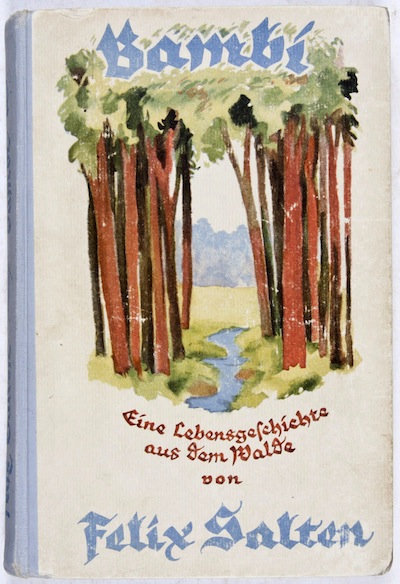
With this scene Salten makes clear that it is impossible to live with Him. He cannot be trusted; he wants only to kill the animals. Salten the Zionist litterateur has delivered his message of the eternal threat to Jews posed by non-Jews by having the animals of the forest killed as mercilessly and bloodily as possible.
It is an irony of the tale of Felix Salten and his masterpiece that though hunters are portrayed as vicious killers, Salten himself was a devoted hunter. His English-language biographer paints him as a different kind of hunter, one who was “attuned to all signs of animal life;” who wrote of a walk in the forest in which he espied a roebuck that “ We look at each other for a few moments, a little eternity. At last the animal turns away, disappears and I am free again. I wait a bit, then go on.” He said of himself that he “was not a shooter,” that he often went into hunting grounds “just to look and without carrying my weapon.” But even so, like Him in the novel, Salten killed. Salten wrote after bringing down a royal stag, one like the majestic Prince of the Forest in Bambi who we eventually understand is Bambi’s father, “As I do every time , I stand by the slain animal, moved with painful remorse and at the same time…fierce joy.” Even a hunter of a different kind is a hunter and a killer.
The Zionist refusal of assimilation, of submission to Gentile strength that was the subject of Salten’s Prague talk cited above, is fully explored in Bambi through Gobo, Faline’s brother. That Bambi is an Aesopian illustration of Zionist themes is unmistakably expressed in the fate of Gobo, a representation of the frail Diaspora Jew. Gobo had last been seen wounded during the pogrom that had resulted in the death of Bambi’s mother, and was presumed dead. Some time later, a happy, healthy Gobo reappears in the forest, and is joyfully welcomed by the animals. He tells the story of his survival, how the dogs of the hunting party were about to tear him apart and then “He came! He shouted at the dogs and immediately they were totally silent.” Panicked when He picked him up, Gobo says “He held me gently pressed against Him. He didn’t hurt me. And then he carried me away…” Gobo praises His wisdom and kindness, His goodness in protecting Gobo from the elements. Gobo has a message for his fellows. “You all think he’s wicked, but He’s not wicked – when he likes someone, when someone serves Him, He is good. Nice and good. No one in the whole world is as good as Him.”
The animals are totally absorbed, swept away by Gobo’s discourse. The feared enemy is not really so fearsome; he is good. But the Old Stag, the Prince of the Forest, notices a black ring around Gobo’s neck “where his fur had been pressed down and worn away.” “That? That’s from the collar I wore… His collar… and… yes… it’s a great honor, the greasiest honor to wear his collar.” The Old Stag, whose nicknames of King and Prince were not coincidentally also terms used to describe Theodor Herzl, can only say “Sad.” And walks away.
Gobo is the ultimate assimilationist Jew, a beast nearly killed and then grateful to the person who almost killed him for not finishing him off. Those who seek to kill him are not irretrievably bad; they can be trusted, for they love us. That this love is conditional, that it requires the acceptance of servitude is of no importance to those who think like Gobo. As La Boetie proved, voluntary servitude and inferiority have their pleasures. The animals are reassured by Gobo’s discourse, and only the Old Stag, the font of wisdom, the stand-in for Herzl, sees this as sad. The stag’s attitude is dismissed by Gobo’s mother: “He’s old, you know, and a bit strange.” Only Bambi takes the stag’s warning word to heart. More, “he was embarrassed for Gobo without knowing why.”
The care taken by all the animals to protect themselves are of no interest to Gobo anymore. “There’s no danger for me,” he explains. He makes no preparations for winter and the scarcity of food. “If it gets too hard for me I’ll just go back to Him.” Bambi and his warnings are dismissed: “What’s he always talking about, the danger? I’m sure he means well, but the danger is only to him and his kind, not me.” Turning your back on your kind and accepting His ways, His protection, His assurances, is the surest way to assimilate to the broader world.
But when out for a walk with Bambi and some other deer, Gobo steps out into the meadow, though warned by Bambi not to do so, for He is there. “If He’s there,” Gobo replies, “I want to say hello to him.”
Gobo pays the ultimate price. A thunderclap sounds, the thunderclap of His rifle, and Gobo collapses, “his flank blown open, his insides spilling bloodily out….Then they heard Gobo’s plaintive death cry.”
Felix Salten the novelist showed the many dangers confronted by Jews. Felix Salten the Zionist propagandist laid out what, for him, was the solution. The fate of Gobo, the fate of Bambi’s mother, prefigure the fate of the mice of Maus and, more importantly, the people for whom they were stand-ins.
Mitchell Abidor
Mitchell Abidor is a Brooklyn-born writer, translator and historian. He has published more than a dozen books and his articles have appeared in The New York Times, Foreign Affairs, The New York Review of Books, and numerous other publications.
Notes
| 1 | Maus is a graphic novel in two volumes (1986, 1991) by Art Spiegelman. The author based his work on interviews he had with his father, a Polish Jew who had survived Auschwitz. |
| 2 | Max Nordau, one of the first Zionists, develops the idea that the regeneration of the Jewish people depends as much on the development of their intelligence as on their physical strength. |
| 3 | In English, “nature, red in tooth and claw” is an expression that refers to A. Tennyson’s portrayal of natural savagery in In Memoriam A. H.H. at “Song 56”, and has become proverbial. |
